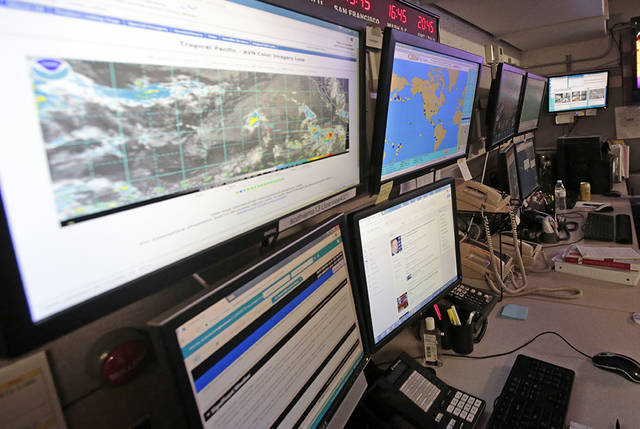New missile alert report urges FEMA to make changes

STAR-ADVERTISER / JULY 2017
Screens inside the State Warning Point at the Department of Defense’s Hawaii Emergency Management Agency (HI-EMA) in Honolulu. A new federal review of the frightening Jan. 13 false ballistic missile alert in Hawaii recommends that the Federal Emergency Management Agency impose new requirements on computer software vendors that help states and local jurisdictions to operate FEMA’s emergency alert system.
A new federal review of the frightening Jan. 13 false ballistic missile alert in Hawaii recommends that the Federal Emergency Management Agency impose new requirements on computer software vendors that help states and local jurisdictions to operate FEMA’s emergency alert system.
The report by the U.S. Department of Homeland Security Inspector General urges FEMA to require that software used by local authorities to access and operate the emergency alert system include features such as the ability to preview or cancel alerts.
The report also recommends that FEMA require that software vendors provide training to state and local emergency management agencies on how to properly use the system, according to the report.
“Until FEMA addresses these issues, the potential exists that alerting authorities will continue to experience problems during the alerting process,” according to the report. FEMA estimates that both recommendations will be implemented by Oct. 31, 2019.
Hawaii U.S. Sen. Mazie Hirono released a statement this morning saying her office requested that the Homeland Security report be released publicly.
Hirono’s statement noted that the concerns cited by the inspector general did not actually cause the false missile alert in Hawaii, which triggered panic across the state. The alert was sent out by a state Hawaii Emergency Management Employee who has said he mistook a HI-EMA alert drill for an actual missile attack.
Don't miss out on what's happening!
Stay in touch with breaking news, as it happens, conveniently in your email inbox. It's FREE!
“I thank the DHS Inspector General for providing much needed answers on FEMA’s role in the false missile alert sent to Hawaii residents and the overall management of the alert system it oversees,” Hirono said in her statement. “The inadequate safeguards found in the report are unacceptable and I will closely monitor FEMA’s progress in implementing the Inspector General’s recommendations to ensure such an incident never happens again in Hawaii, or in any other state that utilizes an emergency alert system.”





